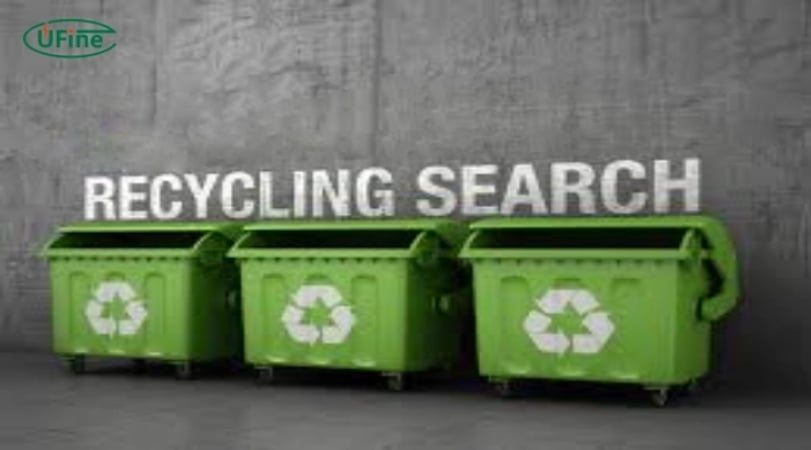Learn how to safely use lithium-ion batteries with tips on proper charging, handling, and using Battery Management Systems. Follow safety standards, prepare for emergencies, and recycle to protect the environment and extend battery life.
Understanding Lithium Ion Battery Hazards
Lithium-ion batteries are powerful and familiar in many devices. Ensuring their safety is very important. This article explains how to use these batteries safely. Ufine Battery, a reliable lithium-ion battery manufacturer, encourages everyone to follow best practices and precautions to avoid hazards and keep everyone safe. Additionally, proper battery recycling helps protect the environment.
1. Thermal Runaway and Its Causes
Thermal runaway is a severe problem with lithium-ion batteries. It happens when the battery gets too hot and cannot cool down. This makes the battery even hotter and can lead to a fire or explosion.
Causes of thermal runaway include:
- Overcharging: Charging the battery too much generates excessive heat.
- Short Circuit: A short circuit inside the battery can create high temperatures.
- Physical Damage: Breaking or crushing the battery can cause internal short circuits.
- High External Temperatures: Leaving the battery in a hot place can trigger thermal runaway.
2. Risks of Overcharging and Discharging
Overcharging and over-discharging are both harmful to lithium-ion batteries. They can reduce the battery's life and cause dangerous situations.
Overcharging:
- This leads to overheating.
- It can cause the battery to swell and leak.
- Increases the risk of thermal runaway.
Over discharging:
- It drains the battery too much.
- It can damage the battery cells.
- Makes the battery unstable and less efficient.
To prevent these issues, always use a proper charger. Stop charging when the battery is full. Please avoid using the battery until it is completely dead.
3. Mechanical Damage and Its Implications
Mechanical damage can make lithium-ion batteries very dangerous. If a battery is dropped, crushed, or punctured, it can cause several problems.
- Internal Short Circuits: Damaged parts inside the battery can touch and create a short circuit.
- Leaks: Harmful chemicals can leak out, posing health risks.
- Fires and Explosions: Damaged batteries are more likely to catch fire or explode.
Always handle batteries with care. Avoid dropping them or exposing them to physical shocks. If a battery looks damaged, do not use it; dispose of it properly.
Best Practices for Safe Use of Lithium Ion Batteries
1. Proper Charging and Discharging Procedures
Properly charging and discharging lithium-ion batteries helps keep them safe and efficient. Follow these steps:
- Use the Right Charger: Always use the charger that comes with the battery or one recommended by the manufacturer. This ensures the battery charges at the correct rate.
- Avoid Overcharging: Once the battery is fully charged, unplug it. Overcharging can cause overheating and reduce battery life.
- Monitor Charging: Keep an eye on the battery while charging. If it gets too hot, unplug it immediately.
- Don't Fully Discharge: Avoid letting the battery drain completely. Recharge it at about 20-30% to prolong its life.
2. Safe Handling and Transportation Guidelines
Handling and transporting lithium-ion batteries safely is crucial to avoid accidents. Here's how to do it:
- Inspect Before Use: Check the battery for any signs of damage, like cracks or leaks. Do not use damaged batteries.
- Handle with Care: Avoid dropping or shaking the batteries. Gentle handling prevents internal damage.
- Use Protective Cases: When transporting batteries, use protective cases to prevent short circuits and physical damage.
- Separate from Metals: Keep batteries away from metal objects like keys or coins to avoid short circuits.
3. Storage Conditions to Minimize Risks
Storing lithium-ion batteries properly helps keep them safe and extends their lifespan. Follow these guidelines:
- Cool and Dry Place: Store batteries in a cool, dry place. Avoid areas with high temperatures and humidity.
- Avoid Extreme Temperatures: Don't store batteries where it gets extremely hot or cold, like in a car during summer or winter.
- Partial Charge for Storage: If storing for a long time, keep the battery at about 50%. This helps maintain its health.
- Away from Flammable Materials: Store batteries away from flammable materials to prevent fire hazards.
Battery Management Systems (BMS)
Battery Management Systems (BMS)
Safety Standards and Regulations
Overview of International Safety Standards
International safety standards ensure lithium-ion batteries are safe to use. Key standards include:
- UL (Underwriters Laboratories): UL standards, like UL 1642, focus on testing battery safety, including risks of fire and explosion.
- IEC (International Electrotechnical Commission): IEC standards, such as IEC 62133, cover safety requirements for portable batteries. They address mechanical and electrical safety.
- Un 38.3: This standard ensures batteries are safe for transport. It includes tests for altitude simulation, thermal tests, and impact tests.
These standards help create uniform safety measures worldwide, protecting users and devices.
Compliance Requirements for Manufacturers
Manufacturers must meet strict compliance requirements to ensure battery safety. Key requirements include:
- Testing: Batteries must pass rigorous tests, such as overcharge, short circuit, and thermal abuse tests.
- Documentation: Detailed documentation of testing procedures and results is required.
- Certification: Certification from recognized bodies, like UL or IEC, is mandatory.
- Quality Assurance: Implementing robust quality assurance programs to monitor production processes and ensure consistent quality.
Compliance ensures batteries are reliable and safe for consumer use.
Regulatory Updates and Their Impact on Safety Practices
Regulatory updates continuously improve battery safety practices. Recent changes include:
- Stricter Transport Regulations: New rules limit the number of batteries shipped together to reduce fire risks.
- Enhanced Labeling Requirements: Updated labeling guidelines help users identify safe handling and disposal methods.
- Environmental Regulations: Regulations like the EU Battery Directive mandate safe recycling and disposal practices to protect the environment.
Staying updated with these regulations helps manufacturers maintain high safety standards and reduces risks.
Preventive Measures for Lithium-ion Battery Manufacturers
Quality Control in Manufacturing Processes
Quality control is vital in battery manufacturing. Effective measures include:
- Incoming Material Inspection: Checking raw materials for quality and consistency.
- In-Process Testing: Conducting tests during production to identify defects early.
- Final Product Testing: Ensuring each battery meets safety and performance standards before shipping.
Strict quality control prevents defective batteries from reaching consumers.
Importance of Rigorous Testing and Inspection
Rigorous testing and inspection are crucial for ensuring battery safety. Key practices include:
- Environmental Testing: Simulating extreme conditions to test battery durability.
- Electrical Testing: Checking for overcharging, short circuits, and capacity issues.
- Mechanical Testing: Assessing the battery's resistance to physical stress and impact.
Comprehensive testing identifies potential hazards and improves battery safety.
Design Innovations to Enhance Safety
Innovative design can significantly enhance battery safety. Examples include:
- Advanced Materials: Using safer, more stable materials reduce fire and explosion risks.
- Thermal Management Systems: Integrating cooling systems to prevent overheating.
- Smart BMS: Developing more innovative Battery Management Systems that provide real-time monitoring and advanced protection features.
Design innovations ensure batteries are safer, more reliable, and longer-lasting.
Emergency Response and Risk Mitigation
Identifying Early Signs of Battery Failure
Recognizing early signs of battery failure can prevent accidents. Look for:
- Swelling: If the battery looks bloated, it shows internal pressure buildup.
- Overheating: A battery that feels hot to the touch even when not in use is a warning.
- Unusual Smell: A strange chemical odor can indicate a leak.
- Leaking: Visible fluid or residue around the battery is a severe sign.
- Reduced Performance: Quick discharge or difficulty charging may signal failure.
Act immediately if you notice any of these signs. Stop using the battery and contact a professional for advice.
Procedures for Handling Battery Fires and Explosions
Handling battery fires and explosions requires quick action. Follow these steps:
- Evacuate the Area: Get everyone to safety immediately.
- Call Emergency Services: Contact local fire services for assistance.
- Use a Fire Extinguisher: If it's safe, use a Class D fire extinguisher specifically for metal fires. Do not use water.
- Isolate the Battery: If possible, move the burning battery away from flammable materials.
- Ventilate the Area: Open windows and doors to clear harmful fumes.
Always prioritize personal safety over salvaging the device.
First Aid Measures for Battery-Related Injuries
In case of battery-related injuries, administer first aid promptly:
- Skin Contact: Rinse the affected area with plenty of water. Remove contaminated clothing.
- Eye Contact: Rinse eyes with clean water for at least 15 minutes. Seek medical attention immediately.
- Inhalation: Move the person to fresh air. If they have difficulty breathing, call emergency services.
- Burns: Cool the burn with cold water. Cover with a clean cloth and seek medical help.
Prompt first aid can reduce the severity of injuries.
Lithium Battery Recycling
Lithium Battery Recycling
Safe Disposal Practices for Used Batteries
Safe disposal of used batteries protects people and the environment. Follow these steps:
- Don't Throw in Trash: Never discard batteries in regular trash. They can leak or catch fire.
- Use Recycling Programs: Find local recycling programs or battery drop-off points.
- Store Safely: Keep used batteries in a cool, dry place until you can recycle them. Avoid mixing with metal objects.
- Label Clearly: Mark batteries as used or damaged to alert recyclers.
Proper disposal prevents environmental contamination and fire hazards.
Recycling Processes and Their Importance
Recycling lithium batteries involves several steps:
- Collection: Gathering used batteries from consumers and businesses.
- Sorting: Separating batteries by type and condition.
- Disassembly: Breaking down batteries into components.
- Material Recovery: Extracting valuable materials like lithium, cobalt, and nickel for reuse.
- Safe Disposal: Properly dispose of non-recyclable parts.
Recycling conserves resources, reduces pollution, and minimizes landfill waste.
Environmental Impact of Improper Disposal
Improper disposal of lithium batteries harms the environment. Here's how:
- Soil and Water Contamination: Leaking chemicals can poison soil and water sources.
- Air Pollution: Burning batteries release toxic fumes into the air.
- Resource Waste: Valuable materials are lost when batteries aren't recycled.
- Wildlife Harm: Toxic substances can affect wildlife and ecosystems.
Proper recycling reduces these negative impacts and promotes a healthier environment.





